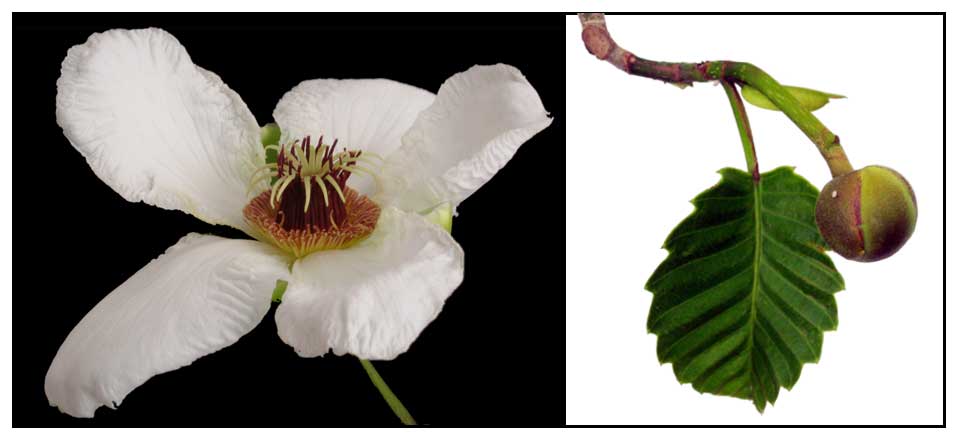
Gen info
- Dillenia is a genus of flowering plants in the family Dilleniaceae. The genus is named after the German botanist Johann Jacob Dillenius. (45)
-
Dillenia indica was one of many species first described by Linnaeus in the 10th edition of his Systema Naturae in 1759.
Botany
Indian Catmon is a more or less deciduous tree growing up to 10 meters or more in height, with a few wide-spreading branches. Leaves are alternate, mostly terminal, oblong or broadly lanceolate, 20 to 30 centimeters long, 6 to 12 centimeters wide, stiff, curving outward, with toothed margins, and beautifully ribbed, with 30 to 40 pairs of side veins. Flowers are very large, 15 to 20 centimeters across, solitary at the ends of the twigs, are facing downward. Sepals are rounded and yellowish green, while the petals are white, free, obovate, and 5 to 7.5 centimeters wide. Fruit, which is made of ripened carpels and enclosed by greatly enlarged and thickened imbricating sepals, is large, somewhat rounded or broadly ovoid, 12.5 to 15 centimeters in diameter, yellowish green hard, and tough. Seeds are numerous and compressed, with a hairy margin.
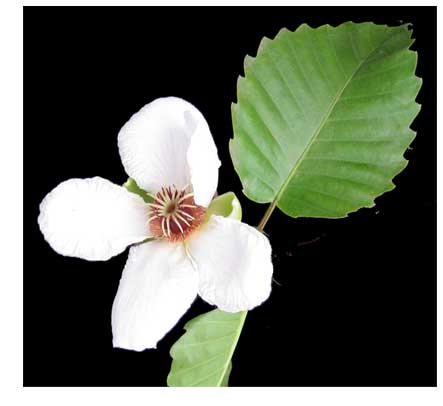 Distribution
- Native to the Philippines.
- Also native to Assam, Bangladesh, Borneo, Cambodia, China, Himalaya, India, Jawa, Laos, Malaya, Myanmar, Nepal, Sri Lanka, Sumatera, Thailand, Vietnam.dille (15)
Constituents
- Fruit is very watery, 86.4% water, with 10% insoluble matter, and very little of that is nutritious.
- Calyces of the fresh ripe fruit yields: moisture 86.40%, alcoholic extract 3.0 %, water extract 0.37%, and insolubles 10.23%.
- Composition of an alcoholic extract was: Moisture 8.20, tannin 1.40, glucose 12.15, mallic acid 2.21, petroleum ether solubles (fats, etc.) 0.72, albuminoids 0.85, ash 12.63, and pectous matter, etc., 61.84.
- Kernel of D. indica yielded antioxidant compounds 1-Dotriacontano and BHT.
- Phytochemical screening have yielded lupeol group of triterpene-like betulinic acid and betulin, and flavonol such as myricetin.
- Yields flavonoids: kaempferol, quercetin, isorhamnetin, naringenin and phenolic materials.
- Stem extract yielded four compounds: lupeol, betulinaldehyde, betulinic acid and stigmasterol.
- A phytochemical screening yielded steroids, terpenoids, saponins, fatty acids, flavonoids, phenolic compounds, glycosides and carbohydrates.
- Phytochemical analysis of crude extract of bark yielded alkaloids, carbohydrates, glycosides, phenol, tannin, proteins, gum, and mucilage. (see study below)
(23)
- Nutritive values of Dillenia indica as traditional Mon food yielded per 100 g of edible portion: 33.57 Kcal, 1.40 g protein, 0.06 g fat, 6.31 g carbohydrate, 0.6 g fiber; (minerals) calcium 62.88 mg, 49.72 mg phosphorus, 1.22 mg iron; (vitamins) 11.75 IU vitamin A, 0.07 mg B1, 0.09 mg B2, 0.98 mg niacin, 4.32 mg vitamin C. (29)
- Methanolic extract of D. excelsa leaves yielded secondary metabolites, including alkaloids, flavonoids, phenolics, triterpenoids, and tannins. (see study below) (43)
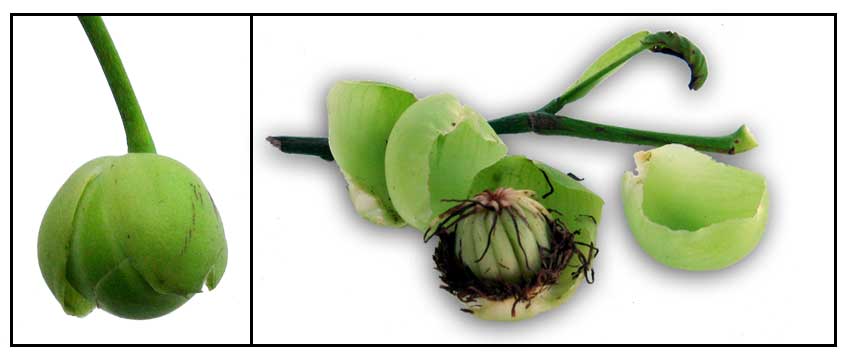 Properties Properties
- Bark and leaves are astringent.
- Studies have suggested anti-leukemic, anti-inflammatory, antioxidant, antidiabetic, antihyperlipidemic,
antimicrobial, anxiolytic, antidiarrheal, anticancer, antinociceptive, anti-arthritic, wound healing, cytotoxic, antimutagenic properties.
Parts
utilized
Fruit, bark, leaves.
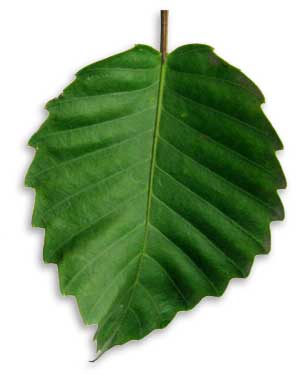 Uses Uses
Edibility
- In Malaya, fruit is used as flavoring with curries. Also made into jam.
- In India, unripe fruits used in making curries; ripe fruits used for making pickles.
Folkloric
- Bark and leaves are astringent.
- Fruit is slightly laxative; in excess, may induce diarrhea.
- Fruit used for relieving abdominal pains.
- Mixed juices of leaf and bark taken orally for treatment of cancer and diarrhea.
- Juice of the fruit, mixed with sugar and water, used as a cooling beverage in fevers and as a cough mixture.
- In Sabah, young leaves or stem bark pounded and applied as paste on swellings and wounds.
- In Thailand, fruit pulp used in washing the hair.
- In Assam, India, fruit and plant juice used for diabetes.
- Fruit juice used as cardiotonic.
- Tribal people of Mizoram, India use a mixture of juices of leaves and bark for treatment of diarrhea and cancer.
Fruits, leaves and bark are used for treatmen of fever, constipation, diarrhea and stomach pains. Fruit decoction used to treat hair loss, diabetes, and as immune enhancer. (41)
Others
• Red dye: A red dye is obtained from the tree bark.
• Cosmetics: Fruits rubbed in water to make soap. Pupl used as hair wash. (34)
• Polish: Dried leaves used to polish ivory. (34)
• Clay brick additive: Wood ash added to clay bricks to increase fire resistance. (34)
• Wood: Moderately hard, with 3-year under water durability. Sometimes used for house building or gunstocks. (34)
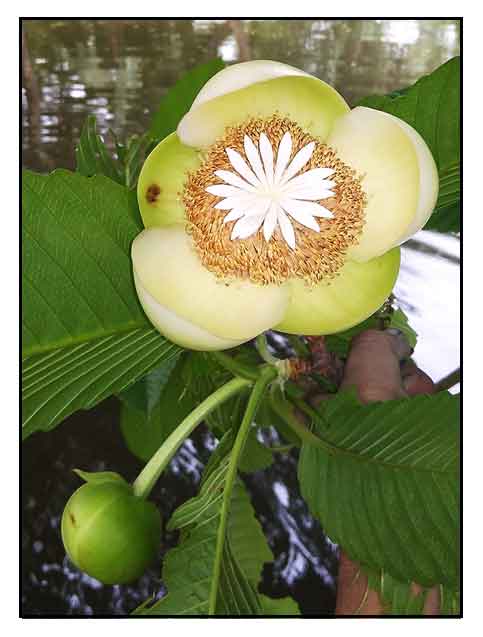 Studies Studies
• Chemical Constituents / Triterpenoids / Flavonoids:
(1) Study isolated four compounds from the n-hexane and chloroform fractionates: 3,5,7-trihydroxy-3'4'-dimethoxy flavone, betulinic acid (dillenetin), ß-sitosterol and stigmasterol. Results indicate Dillenia indica may provide a rich source of triterpenoids and flavonoids. (2) Contains the lupeol group of triterpene (betulinic acid, betulinaldehyde,betulin) and flavonol (myricetin). Stem bark contains myricetin, isorrhamnetic, dillenetin and glucosides.
• Betulinic Acid / Anti-Leukemic:
The methanolic extract of D indica fruit showed significant anti-leukemic activity in human leukemic cell lines. Betulinic acid, the major compound isolated, could explain the anti-leukemic activity. (3)
• Anti-Inflammatory:
The anti-inflammatory activities of the methanol extract of Dillenia indica leaves were observed in various models related to inflammation. The findings support the folkloric use of Dillenia indica in diseases related to inflammatory processes. (4)
• Antioxidant / Fruit:
Study of extracts of Dillenia indica fruits antioxidant activity to be highest in the methanol extract, followed by ethyl acetate and water extracts. Results indicate the extent of antioxidant activity correlated with the amount of phenolics present and that D. indica is rich in phenolics and may provide a good source of antioxidants. (5) Study compared the in in vitro antioxidant properties of fruits of Dillenia indica and Garcinia penduculata. The methanolic extract of D. indica exhibited IC50 value better than vitamin C. The antioxidant activity of D. indica is superior to G. penduculata. The higher amounts of phenolic content in the ME may be the cause of its enhanced in vitro antioxidant activity. (22)
• Anti-Diabetic / Antihyperlipidemic / Leaves:
Study of methanolic leaves extracts in STZ-induced diabetic Wistar rats showed significant anti-diabetic activity. It also showed significant reduction in serum cholesterol, triglycerides, and serum transaminases levels, with improvement in HDL levels. Extract treatment also enhanced serum insulin levels in diabetic rats. (7)
• Antimicrobial / Bark:
Study of methanolic extracts and fractions of the bark of DI showed remarkable activities against all test bacteria. An n-Hexane fraction showed highest activity against Shigella dysenteriae. A methanol extract showed highest activity against fungus Candida albicans. (8)
• Antimicrobial / Antioxidant / Cytotoxicity:
Crude methanolic extracts showed weak antimicrobial activity against bacteria and fungi. Extractives exhibited significant cytotoxic activity on brine shrimp lethality bioassay. Extractives also exhibited significant free radical scavenging activity. (9)
• Anxiolytic / Leaves: Study of a hydroethanolic leaves extract showed prominent anxiolytic activity in mice. Diazepam was used as the standard drug. (10)
• Free Radical Scavenging Activity:
Study of methanolic leaves extract showed significant reducing power and concentration-dependent free radical scavenging effect. Total phenolic contents of the leaves extract were gallic acid equivalents and total flavonoids were catechin equivalents. (11)
• Hypoglycemic / Fruit / Randomized Trial:
Study evaluated the fruit powder of Dillenia indica for hypoglycemic activity in a randomized trial of 40 patients. Results showed significant hypoglycemic effect, with decreased fasting blood sugar and post-prandial blood sugar, without any unwanted effect. (13)
• Antinociceptive / Antioxidant / Bark:
Study of a methanol extract of bark showed good antioxidant potential in the DPPH and total ROS scavenging power. The extract showed significant increase in threshold of pain in hotplate and tail immersion methods. Results suggest strong analgesic and antioxidant effects. (14)
• Effect of Fruit Mucilage as Mucoadhesive for Controlled Release of Drug / Fruit:
Study evaluated the fruit mucilage extracted from Dillenia indica as natural source for the development of controlled release formulation of metformin hydrochloride. The prepared microspheres exhibited mucoadhesive properties and demonstrated controlled release of metformin HCl. (16) Study prepared mucoadhesive nasal gels containing felodipine. The mucoadhesive substance was isolated from D. indica fruits. The nasal mucoadhesive substance from D. indica fruits showed to be a better mucoadhesive agent than the synthetic polymers like HPMC which is most frequently used in the formulation of nasal gels. The Dillenia indica NMS gel showed favorable mucoadhesive properties causing it to adhere to the nasal mucosa for a long time and enhance the absorption of drugs administered intranasally. (28)
• Increased Wound Healing with Microcurrent Application / Glycolic Extract / Fruits:
Study evaluated the wound healing activity of glycolic extract of Dillenia indica from matured fruits alone or in combination with microcurrent stimulation of skin wounds surgically induced on the back of Wistar rats. Results showed microcurrent application alone or combined with exerted significant effects on wound healing on the rat model. (17)
• Flavonoid and Triterpenes / Anti-Inflammatory and Anti-Arthritic / Leaves:
Study evaluated the anti-inflammatory and anti-arthritic activity of chloroform fraction of methanolic extract of fresh leaves of Dillenia indica leaves. Results showed significant anti-inflammatory activity on carrageenan-induced rat paw edema model. In anti-arthritic evaluation using complete Freund's adjuvant induced arthritis model, there was significant increase in leucocyte count in adjuvant-induced arthritic rats, which may be due to stimulation of immune system against invading antigens. (18)
• Antimicrobial / Cytotoxic / Stem Bark: Study evaluated the in vitro antibacterial, antifungal and cytotoxic effects of ethanolic and petroleum ether extracts of stem bark of Dillenia indica and Abroma augusta. Results showed moderate antibacterial and antifungal activities. In invitro cytotoxicity study using brine shrimp lethality bioassay showed mortality rate of brine shrimp nauplii (Artemia salina). (19)
• Amelioration of Experimental Colitis: Study of fractions of methanolic extract of Dillenia indica in acetic acid induced experimental colitis in mice showed ameliorative effects. The protective role was probably achieved by decrease in release of pro-inflammatory markers mediators like TNF-α and MPO activity with subsequent modulation of oxidant/antioxidant balance in the colonic tissue. (20)
• Antibacterial / Antimutagenic / Fruit and Bark: Study evaluated the antibacterial and antimutagenic activities of fruit and bark extracts of Dillenia indica and the effect of inhibitory concentrations on cell wall, nucleic acid leakage, and pathogenic genes of bacteria. Fruit and bark extract showed minimum inhibitory concentration against different bacteria, with the bark extract showing higher activity. Both extracts showed statistically similar but strong antimutagenic activity at or above 1500 µg/plat concentration. (21)
• Cytotoxic / Anthelmintic / Bark: Study of a methanol extract of bark and its fractions showed potent cytotoxic principles. Comparison with vincristine signifies cytotoxicity exhibited by the extracts have antitumor activity. The ME demonstrated anthelmintic activity with paralysis as well as death of worm in much more time even in higher concentrations. (see constituents above) (23)
• Hair Waving Natural Product / Sap: Keratin known as a main component and provides mechanical strength to hair. Study evaluated the ability of Dillenia indica seed sap to affect the molecular strength of hair. Pronounced chemical changes and hair surface change were observed. (24)
• Antitussive: Study evaluated the antitussive activity of ethanol extract of Dillenia indica whole plant by sulfur dioxide gas induced model in mice. Results showed the D. indica extract produced significant dose dependent antitussive activity compared with control and codeine phosphate. (25)
• Gelatinous Fruit Pulp as Facial Mask / Cosmetic Applications: Dillenia indica gelatinous fruit pulp is rich in pectins and nutrients. Gelling properties, presence of phenolic antioxidants, and a safety profile suggest potential for cosmetic applications. (26)
• Antihyperlipidemic: Study evaluated the hyperlipidemic effects of methanol extract of Z. officinale, M. charantia, T. foenum-graecum, Dillenia indica, and T. indica. Dillenia indica significantly (p<001) increased blood HDL cholesterol and significantly (p<0.001) reduced LDL level in the blood. (27)
• Betulinic Acid for Psoriasis / Fruit: The fruit of Dillenia indica is rich in betulinic acid. Anti-inflammatory and immunomodulatory activities have been previously attributed to betulinic acid. Study evaluated the anti-psoriatic activity of fruit extracts of D. indica in relation to its betulinic acid content. The content of betulinic acid in the ethyl acetate extract was 20 times higher than that in the hydroethanol extract. The most promising anti-psoriatic activity was seen with the EA extract associated with higher content of betulinic acid. The activity was about 10% superior than clobetasol's. Histopathological analysis showed EA induced orthokeratosis and reduced the inflammatory infiltrate compared to non-treated control. (30)
• Healing Effect / Betulinic Acid / UV-Radiation Induced Psoriasis-Like Wounds / Fruit: Study evaluated the healing effect of fruit extracts fruit of Dillenia indica on induced psoriasis-like wounds in Wistar rats. Betulinic acid concentrations in AEE (aqueous ethanol extract) and EAE (ethyl acetate extract) were 4.6 and 107.6 mg/g. The fruit extracts neutralized lipid peroxidation in vitro at 0.02 µg/mL, and at 50 mg/ml. accelerated the healing of psoriasis-like wounds and reduced inflammation via a mechanism associated with protection against oxidative damage in biomolecules. The EAE exhibited activity closer to that of clobetasol. Betulinic acid may be an active constituent. (31)
• Silver Nanopartiles / Antibacterial: Study reports on the simple and eco-friendly biosynthesis of silver nanoparticles using D. indica extract. The AgNPs exhibited significant antibacterial activity with inhibition of 27 and 16 mm against test bacteria at 0.25 mg/ml. (32)
• Antioxidant / Roots: Study evaluated various root extracts (petroleum ether, chloroform and ethanol) of Dillenia indica for antioxidant activity. using DPPH, TBA and reducing power assays. While all extracts showed potent antioxidant activity compared to standard drug Ascorbic acid, the chloroform extract of root showed most significant activity. (33)
• Hypoglycemic / Hypolipidemic / Leaves: Study evaluated the hypoglycemic and hypolipidemic properties of Dillenia indica methanolic leaves extracts in STZ-induced diabetic Wistar rats. Results showed significant antidiabetic activity (p<0.01) with significant reduction in serum cholesterol, triglycerides, and serum transaminase levels and improvement in HDL-cholesterol. (p<0.01). The extract enhanced serum insulin level. (35)
• Antidiarrheal / Leaves and Fruits: Study evaluated the ethanolic extract of leaf and fruit for antidiarrheal activity. Results showed antidiarrheal activity by castor oil-induced method and charcoal plug method. In the castor oil induced method, there was significant decrease in the total number of feces. In the charcoal plug method, distance traveled was slightly lower than control, 28.67 cm for leaf, 22.67 cm for fruit, compared to control at 41 cm, and loperamide at 16 cm. (36)
• Glucose and Cholesterol Lowering Effects: Study evaluated the glucose and lipid lowering effects of D. indica extracts in STZ-induced diabetic rats with hyperlipidemia induced by cholesterol-coconut oil-cow fat diet. Four weeks of extract administration showed significant (p≤0.05) reduction in fasting serum glucose with concomitant improvement in serum insulin levels. There was significant (p≤0.05) reduction in total cholesterol, along with increase in HDL. (37)
• Gold Nanoparticles / Fruit: Study reports on a green novel method of synthesis of gold nanoparticles using an aqueous fruit extract of D. indica as effective reducing and capping agent. The synthesized AuNPs did not show any cytotoxicity in the normal fibroblast cell line L929. (38)
• Anticancer / Betulinic Acid / Bark and Leaf: Study estimated betulinic acid from bark and leaf of D. indica and D. pentagyna using RP-HPLC method. Prepared fractions were evaluated for its anticancer potential. MTT assay were performed on three different cell lines HCT-15, DU145 and A-375 which explains the role of betulinic acid and the anticancer potential of plants. (39)
• Inhibition of Testosterone Induced Benign Prostatic Hyperplasia / Bark: Study evaluated the inhibitory effect of an aqueous bark extract of D. indica in testosterone induced-BPH rat model. The inhibitory effect of the bark extract was evidenced by significant reduction in the prostate weight and prostatic index compared to the testosterone induced BPH model group. The extract treatment also ameliorated the hyperplasia of prostate epithelium similar to that observed with finasteride (5mg/kg) group. Results showed the bark extract significantly reduced progression of BPH and suggest a potential phytopharmaceutical treatment for BPH. (40)
• Study for Dermal Adverse Effects / Betulinic Acid / Fruits: Study evaluated the potential adverse effects of dermal administration of D. indica fruit extract standardized to betulinic acid in healthy male Wistar rats. The skin irritation index showed negligible skin irritation when applied to rat skin at 150 mg/mL. There was a photosensitizing effect close to 10 mg/mL 5-methoxypsoralen. Data suggest the extract was safe in healthy rodents, but advice caution because of photosensitizing activity. (42)
• Nephroprotective / Cisplatin-Induced Kidney Injury / Fruit: Study evaluated the protective effect of D. indica fruit extracts on cisplatin-induced nephrotoxicity in rats. Methanol and ethyl acetate fruit extracts produced beneficial effect and ameliorated serum and urine parameters of toxicity to normal. Extract administration increased Na+/K+-ATPase activity and different enzymatic and non-enzymatic antioxidants positively, and significantly reduced lipid peroxidation. The extracts exhibited potent in vitro antioxidant activity. Results suggest D. indica fruit has potential for maximizing the clinical use of cisplatin in the treatment of different cancer without nephrotoxicity. (43)
• Cytotoxicity / Sedative Activity / Stem Bark: Study evaluated a methanolic extract annd various fractions of stem bark for cytotoxic activity using brine shrimp lethality assay and sedative activities using hole cross, open field, and elevated-plus maze (EPM) in Swiss albino mice. In BSLA, the petroleum ether fraction and aqueous fraction exhibited significant cytotoxicity (24.55 and 14.45 µg/mL, respectively) compared to standard vincristine sulfate (7.5 µg/mL). The chloroform fraction significantly suppressed locomotor activity compared to methanol and aqueous fractions. (44)
Availability
- Wild-crafted.
- Seeds in the cybermarket.
|




 Properties
Properties Uses
Uses Studies
Studies

